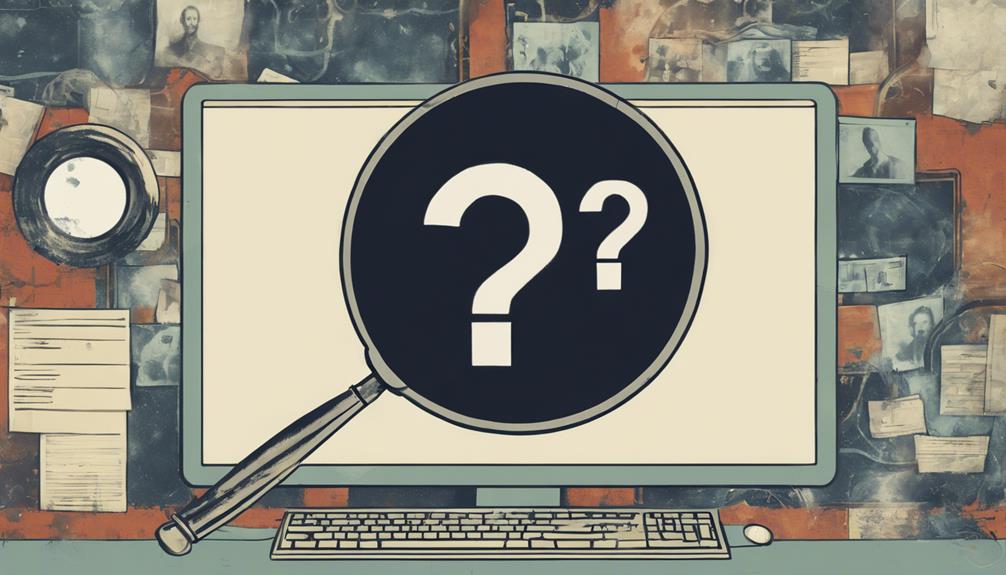Continuous monitoring of background checks means regularly updating employee information to catch new criminal records, financial issues, or other concerns as they develop. It helps you stay ahead of potential risks and guarantees ongoing compliance while maintaining a safe workplace. You need to handle this process ethically, respecting privacy laws and obtaining proper consent. If you want to learn more about effective strategies and legal considerations, keep exploring how this approach can work for your organization.
Key Takeaways
- Continuous monitoring involves regular updates to background information to identify new risks or issues over time.
- It helps organizations proactively detect criminal activities, financial problems, or compliance concerns after initial screening.
- Legal and privacy considerations require transparent processes, proper consent, and adherence to jurisdiction-specific regulations.
- Maintaining thorough documentation of monitoring procedures and review intervals ensures accountability and compliance.
- The goal is to enhance safety and trust while respecting employee privacy through ethical, non-intrusive practices.

In today’s interconnected world, background checks often feel like they never truly end. As an employer, you might find yourself continuously monitoring employees to ensure ongoing safety and compliance. This approach, called continuous monitoring, involves regularly updating background information instead of relying on a one-time check. It helps you stay ahead of potential risks, but it also raises important questions about employee privacy and legal compliance. You need to strike a balance between safeguarding your organization and respecting individual rights.
By adopting continuous monitoring, you gain real-time insights into your employees’ backgrounds, criminal records, or financial status. This ongoing process allows you to detect issues that might develop after the initial hiring, like new criminal activity or financial distress. However, it’s crucial to handle this information carefully to avoid infringing on employee privacy. Transparency is key—you should clearly communicate your monitoring practices and obtain proper consent to prevent misunderstandings or feelings of invasion. Respecting privacy doesn’t mean you forego your responsibilities; it means you implement monitoring in a way that’s fair and compliant with laws.
Legal compliance is another critical aspect. Different jurisdictions have varying regulations about what information you can collect and how often you can check it. Some laws restrict continuous background screening to specific circumstances, such as positions with high security risks or financial responsibilities. You need to stay informed about these rules to avoid legal pitfalls, like discrimination claims or privacy violations. Moreover, you should ensure your monitoring practices are consistent and non-discriminatory. Unequal enforcement or intrusive checks could lead to legal challenges or damage your reputation.
Implementing continuous background checks also requires careful documentation. Keep detailed records of what information you gather, how often you review it, and the criteria for action. This documentation not only helps demonstrate your commitment to compliance but also provides a clear audit trail if questions arise. Staying aware of vetting best practices ensures your process remains effective and ethical. Remember, the goal isn’t to micromanage employees but to maintain a safe, compliant workplace. You want to create an environment where employees feel trusted, not constantly watched.
In essence, continuous monitoring can be a powerful tool to maintain a secure and compliant workplace, but it demands a thoughtful approach. You must prioritize employee privacy by being transparent and respectful, while also adhering to legal standards. When done correctly, ongoing background checks can protect your organization without crossing ethical or legal boundaries. It’s about creating a balance—staying vigilant without infringing on the rights of those you employ.
Frequently Asked Questions
How Secure Is the Data Collected During Continuous Monitoring?
You’re likely concerned about data security during continuous monitoring. Rest assured, your data is protected through robust measures like data encryption, which scrambles information to prevent unauthorized access. Additionally, strict access controls limit who can view or modify your information. While no system is completely invulnerable, these security practices markedly reduce risks, ensuring your data remains confidential and protected throughout the ongoing monitoring process.
Can Employees Opt Out of Ongoing Background Checks?
Imagine having the power to choose your privacy level—though many companies require ongoing background checks, employee consent is essential. You typically can’t opt out of continuous monitoring, as it’s designed to ensure safety and compliance. However, your privacy concerns matter, so employers should transparently communicate how data is employed. Ultimately, your participation depends on company policies, but open dialogue helps balance security needs with personal boundaries.
What Industries Are Most Likely to Implement Continuous Monitoring?
Many industries, like finance, healthcare, and government, are likely to implement continuous monitoring because they prioritize employee privacy and data accuracy. You might find this approach more common where sensitive information or security is involved, ensuring ongoing compliance and risk management. As an employee, you should be aware that continuous monitoring aims to keep data accurate while balancing privacy concerns, fostering trust and safety in your workplace.
How Often Are Background Checks Updated in Continuous Monitoring Systems?
In continuous monitoring systems, you’ll find update intervals fluctuate based on industry and risk level. The data refresh frequency can range from real-time updates to daily or weekly intervals. You should expect frequent updates, especially in high-risk sectors like finance or healthcare, where timely information is critical. Regularly scheduled checks guarantee your system stays current, helping you identify issues quickly and maintain compliance with evolving regulations.
What Are the Legal Considerations Surrounding Continuous Background Checks?
You might think legal considerations are just minor hurdles, but they’re actually the biggest obstacle in continuous background checks. You must guarantee legal compliance, respecting laws like the Fair Credit Reporting Act and Equal Employment Opportunity laws. Privacy concerns are also massive; you can’t infringe on employees’ rights or mishandle sensitive data. Ignoring these legal issues can lead to costly lawsuits and damage your reputation, so stay informed and compliant at all times.
Conclusion
Imagine a world where your background check is a never-ending story, constantly updated like a live news feed. While this ongoing process offers unmatched security, it also means your past is always within sight, like a shadow that never leaves. You’re caught between peace of mind and the feeling of being perpetually watched. As technology advances, this delicate balance becomes clearer—continuous monitoring shapes your future, just as it constantly redefines your present.








